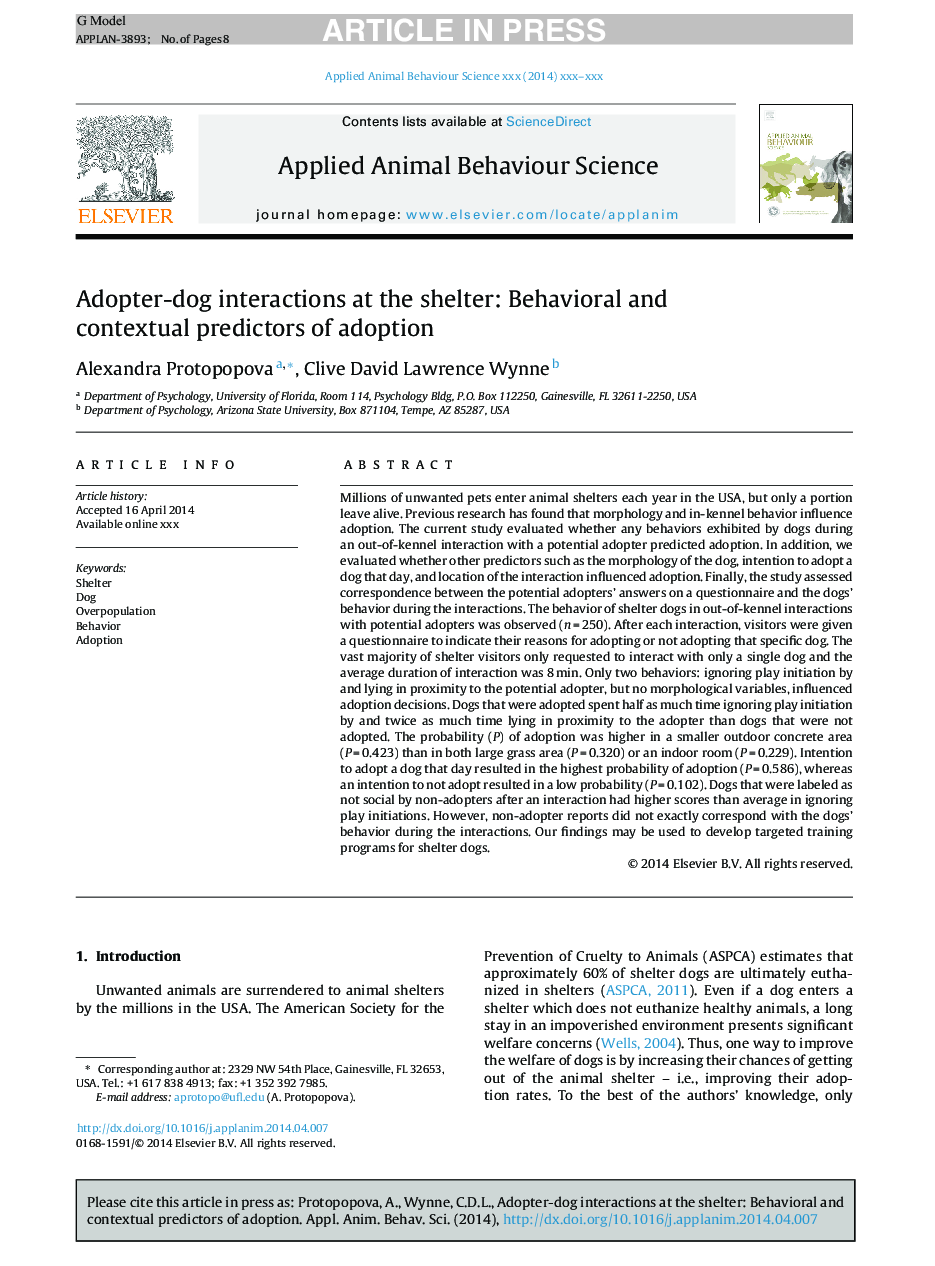| Article ID | Journal | Published Year | Pages | File Type |
|---|---|---|---|---|
| 6379677 | Applied Animal Behaviour Science | 2014 | 8 Pages |
Abstract
Millions of unwanted pets enter animal shelters each year in the USA, but only a portion leave alive. Previous research has found that morphology and in-kennel behavior influence adoption. The current study evaluated whether any behaviors exhibited by dogs during an out-of-kennel interaction with a potential adopter predicted adoption. In addition, we evaluated whether other predictors such as the morphology of the dog, intention to adopt a dog that day, and location of the interaction influenced adoption. Finally, the study assessed correspondence between the potential adopters' answers on a questionnaire and the dogs' behavior during the interactions. The behavior of shelter dogs in out-of-kennel interactions with potential adopters was observed (n = 250). After each interaction, visitors were given a questionnaire to indicate their reasons for adopting or not adopting that specific dog. The vast majority of shelter visitors only requested to interact with only a single dog and the average duration of interaction was 8 min. Only two behaviors: ignoring play initiation by and lying in proximity to the potential adopter, but no morphological variables, influenced adoption decisions. Dogs that were adopted spent half as much time ignoring play initiation by and twice as much time lying in proximity to the adopter than dogs that were not adopted. The probability (P) of adoption was higher in a smaller outdoor concrete area (P = 0.423) than in both large grass area (P = 0.320) or an indoor room (P = 0.229). Intention to adopt a dog that day resulted in the highest probability of adoption (P = 0.586), whereas an intention to not adopt resulted in a low probability (P = 0.102). Dogs that were labeled as not social by non-adopters after an interaction had higher scores than average in ignoring play initiations. However, non-adopter reports did not exactly correspond with the dogs' behavior during the interactions. Our findings may be used to develop targeted training programs for shelter dogs.
Related Topics
Life Sciences
Agricultural and Biological Sciences
Animal Science and Zoology
Authors
Alexandra Protopopova, Clive David Lawrence Wynne,
